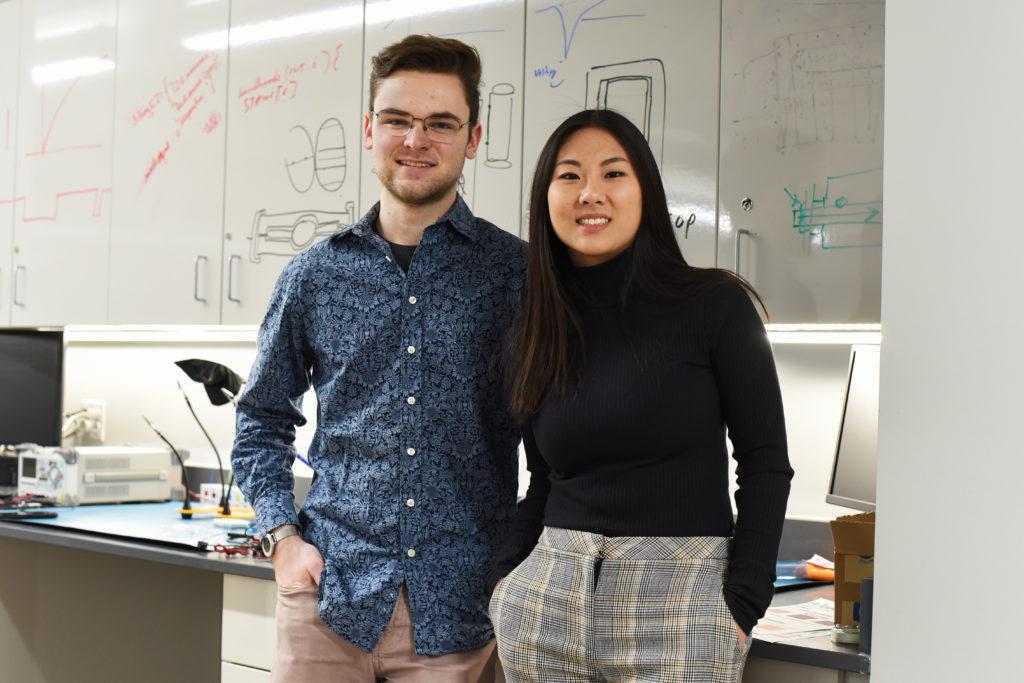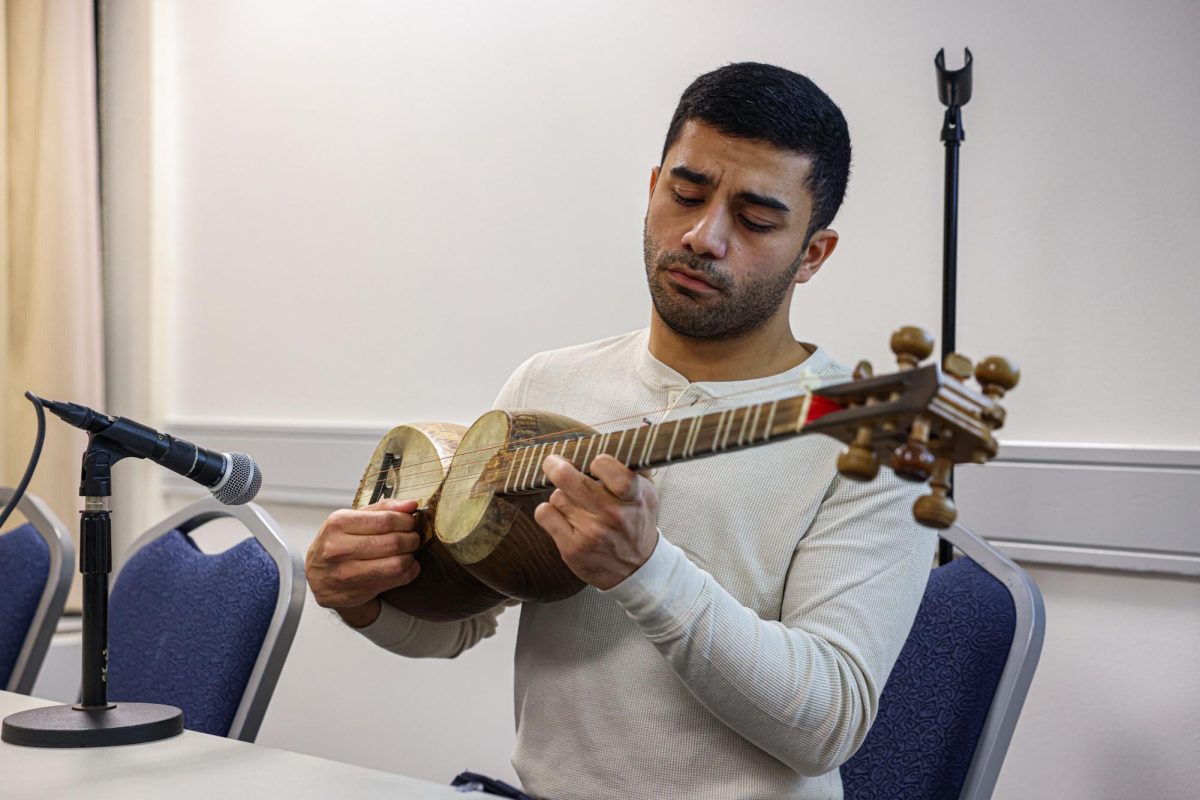A new student group dedicated to facilitating interdisciplinary research projects in the University’s first innovation lab is in full swing this semester.
The Innovation Lab Club was approved last semester prior to the addition of a special physics department lab space built in Corcoran Hall but is kicking off this spring. Sylvain Guiriec, an astrophysics professor and chair of the Innovation Lab Club, said the group – which students from all majors are encouraged to join – aims to promote the importance of STEM research, focusing on projects that directly impact campus, like monitoring highly populated pollen spaces and creating upgraded diversity trainings on virtual reality technology.
“What we’ve been doing so far, the club, is actually looking into how we can bring physics outside this building, how we can actually bring the people inside the building so that they will know what is happening,” Guiriec said. “And physics can be fun.”
Guiriec said he has been in contact with officials at NASA, the World Bank and the National Science Foundation to gain funding and display the projects students in the club produce.
About 40 members, ranging from undergraduate and graduate students to personnel from the World Bank and the Office of Innovation and Entrepreneurship, are registered for the group, Guiriec said. The club meets at the Innovation Lab in the basement of Corcoran Hall on Tuesdays and Thursdays from 6 to 8 p.m., he said.
Guiriec said one project in the making is dedicated to measuring environmental changes tracked on sensors that will be placed around the city to measure factors like temperature or pollen concentration. The project will inform community members of which areas of D.C. are likely to induce allergic reactions to environmental substances, like pollen, he said.
“I was describing core concepts in class, and I told the students one-by-one, ‘You can go there and see what it is in reality,’ and they liked it, obviously,” Guiriec said. “It’s very immersive.”
He said he plans to hold a series of workshops – which experts on areas like building sustainable communities or statistics will attend to train participants – to reel in more interested students.
“We need to advertise what we can do with physics, what people can do with physics, the importance of this field when you try to build something off concept,” Guiriec said.
Innovation Lab Club member Adellar Irankunda said he and fellow club members are working on a new virtual reality project called “BLiNK Technologies,” a program geared toward engaging students through a simulated version of the first-year diversity trainings to educate students on race and gender diversity.
“It’s kind of immersing people through the lived experiences of minorities and stuff like that, using virtual reality and mixed reality for the purpose of learning a deeper understanding of and empathy,” he said.
Irankunda said he and fellow club members have introduced “BLiNK Technologies” to Caroline Laguerre-Brown, the vice provost of diversity, equity and community engagement, in hopes of discussing the feasibility of using the virtual reality platform, rather than online modules, for freshman diversity trainings.
Officials implemented first-year, online diversity trainings last February after a racist Snapchat circulated campus in 2018. Irankuanda said “BliNK Technologies” would engage students more effectively than a website on which students answer questions about diversity and inclusion.
The group plans to showcase their projects at the New Venture Competition – a competition for entrepreneurial ideas centered around improving society through technology, he said. In addition to the competition, The Innovation Lab Club will attend showcases and hang fliers around campus to increase attention and boost student participation for the club.
Club member Marisa Lazarus said she is concerned non-STEM students might be discouraged from joining the club under the impression they would have to buy lab equipment or pay fees. But she said the group doesn’t require any payment, equipment is provided and students from any major are welcome to join.
“We want other people besides science people,” Lazarus said. “You could honestly come in here and work on anything you want.”
She said she wants the club to partner with the Office of Innovation and Entrepreneurship, which will help transform the club’s ideas into legitimate societal inventions and put together a newsletter to increase advertising for the club.
“If you were to need to make a prototype or something, or test software, I feel like the University doesn’t really have the resources for that, and I feel like we fill that kind of gap at GW,” she said. “We have a lot of cool equipment that gets people excited about science, and I think that that’s part of the new mission of the school and I think that that’s really cool.”








